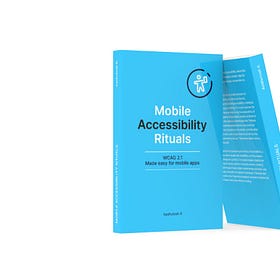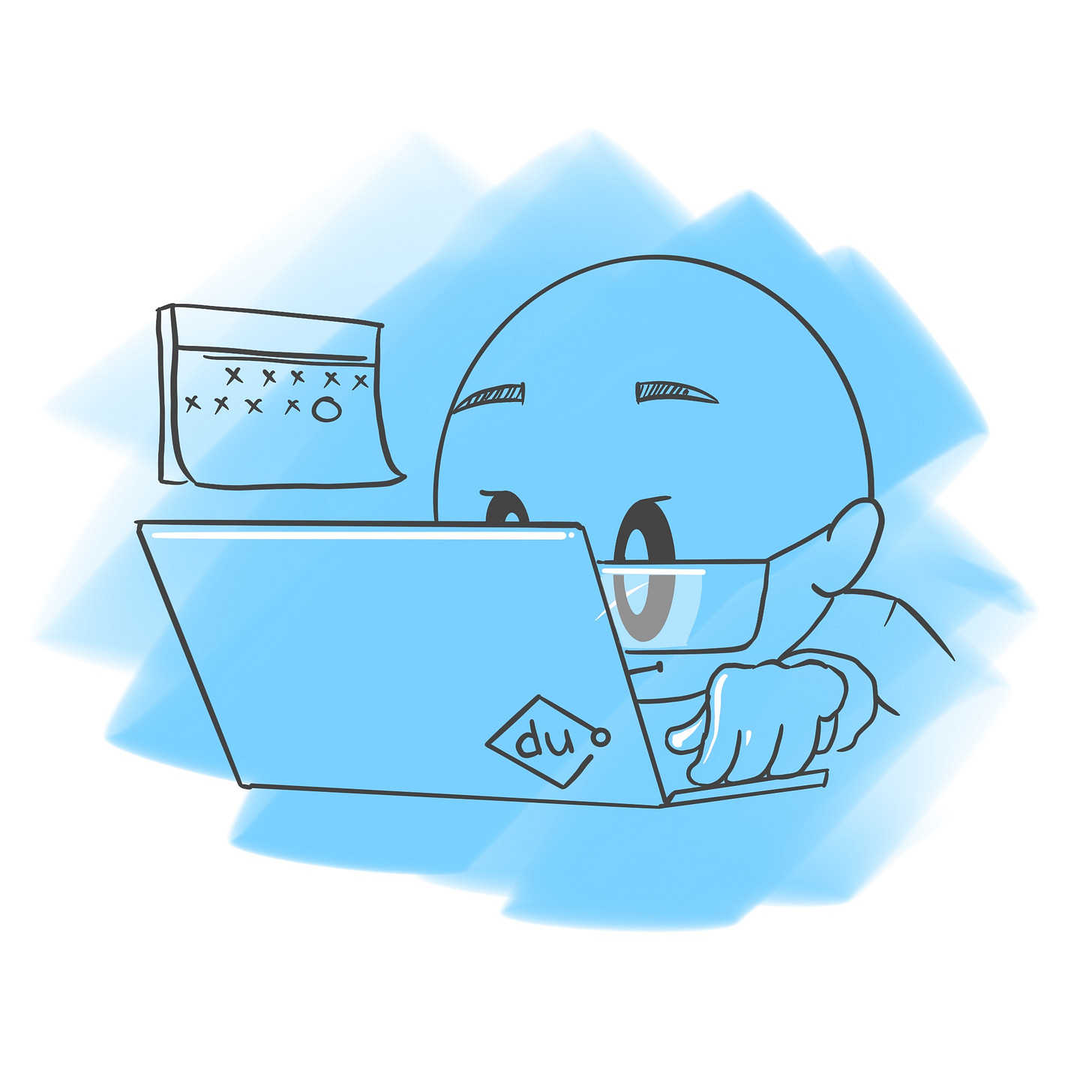As of yesterday, I am an IAAP-certified Accessibility Professional!
CPACC, a certification offered by IAAP the International Association of Accessibility Professionals, is the gold standard certification that gives an accessibility professional credentials to get his or her point across. This is the only certification that can add some weight to your opinions on accessibility while discussing these matters with your organization’s leadership. There are other courses of course, but none of them come as close to this one in terms of reach, popularity, and credibility.
Chapter 1: the Research
I published a book on making mobile apps accessible, not for the entire organization but more for the product managers, product owners, and designers involved in the product life cycle. (available on Amazon, under the title Mobile Accessibility Rituals), or you can visit the publications section here
Yes, I have compiled books!
Every once in a while, the content gets a bit large for blog posts. So it is assimilated and published as a book (or a notion template). You can buy the existing books and find upcoming books on this page.
While writing the book and trying to market it I realized that I lacked the necessary credentials to back my claim that this book is not just another faff, but it is written by someone who knows what they are doing. I was (and I am still) a member of MATF, a working group under W3C tasked with translating the WCAG guidelines for mobile apps, but not all professionals were aware of what this task force does. To fix this, I needed to get myself certified and started looking for certifications that could enhance the market value of the book.
The first one that I found was a course offered by Edx and it covers the basics of web accessibility. It touches upon the topics of four pillars of accessibility, an organizational plan to introduce accessibility with the initiate, plan, execute, and sustain framework. This course was a paid course.
The second one I found was provided by accessible EU, and that was being offered for a very limited time. This course covered most of the topics related to WCAG, the basic four pillars of accessibility, and how accessible products help people with disabilities.
However, the more research I did every single link pointed me to one certification. The CPACC - Certified Professional in Accessibility Core Competencies, offered by IAAP. This is the most honored certification and can be seen added in front of the LinkedIn profiles of the people doing amazing work in the field of Accessibility.
Chapter 2: Budgeting
The CPACC certificate is expensive. For a candidate whose employer is not an IAAP member, the exam fee is $458. (612 SGD, or 37,700 INR) This certificate however also comes with a best-before tag of 3 years. You need to keep contributing to the field of accessibility to maintain the certification. A comprehensive list of how you need to earn those 45 points is given on the IAAP website. If your certification is being sponsored by an employer, who happens to be an IAAP member the fees are significantly less. If you're trying to get certified from a list of countries marked as emerging economies, the fee is almost halved.
The website also has links to the preparation material that one needs to know before they appear for this particular exam. There is no fixed textbook per se. You need to be able to understand the key information pieces needed to get through the exam from the sea of information that is hidden underneath those links.
Chapter 3: Studying
While roaming around the web to understand how I can tackle this particular issue or how can I get help in cracking this exam, I landed on the Deque website. Deque is a company that provides tools to enhance the accessibility of your digital products. The most famous tool that they have developed is the Axe web accessibility development tool. While digging further, I landed on the Deque University page, where they were offering a certificate course. Upon closer inspection, I realized that this certificate course is for the preparation of the main CPACC examination offered by IAAP. Deque University offers this course at $60, but at the same time, they offer a year-long access to the course material and access to a dummy examination. For $60, you have access to the course material for one year to learn everything at your own pace.
The course at Deque University Learning Center is well structured and gives you all the information that you need to know based on the syllabus provided on the IAAP website. If you are serious about cracking this examination I would recommend investing in this course so that you can remain laser-focused and learn at your own pace without losing a bunch of links.
The CPACC certificate is not limited to accessibility in the digital workspace. This particular certification touches upon the accessibility considerations in public spaces, learning environments, and digital spaces. The syllabus for CPACC covers everything that you need to know about the world of accessibility like laws and regulations, universal principles of design, and theoretical knowledge of WCAG guidelines. If you want to limit your knowledge only to digital accessibility, I would recommend going for the WAS or CPWA certifications.
Chapter 4: Registration
Appearing for the CPACC examination is not a straightforward process. First, you need to register for an examination, where you need to justify why you want to get this certificate, in a single line! Then this particular form will be sent to the IAAP exam controllers, who will get this and approve your application.
Once you get approved for your examination, then you are eligible to pay for the exam. The payment collection form, to be really honest, looks shady. You provide a bunch of details and then you write down your credit card number expiry date and CVV in a form that looks like a basic HTML structure. I used a disposable virtual card to make this payment. I think IAAP can invest in payment gateways that people are used to and look trustworthy.
Once you pay, you wait for 2 days to receive an email from Pearson Group. Pearson Group is the agency that conducts the actual exam. One can go to their physical examination centers or they can enroll via examination with a virtual proctor. While registering for the examination with a virtual proctor, they ask a bunch of questions like what kind of accommodations would you need, whether you would have a beverage on your desk, whether you would need toilet breaks during the examination, etc. After you have provided all this information, they allow you to select a slot for the examination.
Chapter 5: System Requirements
If you want to appear for this examination from the comfort of your home, you need to install something called Vue on your machine. Given that the exam centers are very less, this could be the only option available for a few candidates. This particular browser takes control of your entire machine and locks down every other application running on your laptop during exam hours. The tool also checks if your internet connection is stable enough to handle live streaming of your face while getting all the questions from the web. If you have only your work laptop, unfortunately, this won't work. You need Admin rights to your machine to make this happen!
Chapter 6: Checking In
Half an hour before the actual slot of your examination, you need to do something called a check-in ritual. During this, you are prompted to click photographs of your government ID take a selfie, take a photo of the machine on which you will write your exam, a photograph of what is behind your chair, and pictures of what is on the right and left side of your examination site. After you upload all these photographs, you must wait for the proctor to join in. The proctors can see you in the video and they have full control of your machine. They can start a chat or a call if they wish to. In my session experience, the proctor asked me to lift my laptop and show him the entire room. He also asked me to unplug the external monitor on my desk and get rid of all the books on my desk along with the small Spider-Man toy. Phones and even smart watches are not allowed while you are writing your exam.
I am not saying this is not needed. Just sharing the experiences! kudos to the proctor who was thorough in making the exam seat as clean as possible.
Chapter 7: The Actual Exam
The exam consists of 100 questions, all multiple-choice. There are no essays or fill-in-the-blanks or any other types of questions where you are required to do calculations or write an essay. Most questions fall under either the `you know the answer` category or the `you don't know the answer` category. After going through the course by Deque University and appearing for the actual exam I can safely say that it is worth investing in the Deque University course if you're serious about cracking CPACC. Most of the questions that appear on the exam are pretty similar to the practice questions I faced during the course.
Chapter 8: Results
This is where the entire process gets extremely disappointing. After you submit your exam a message is displayed, that reads “Your results will be available in 4 to 6 weeks after the conclusion of the ‘exam session’”. And the results will be conveyed to you via email only in the form of pass or fail. The important thing to understand here is that by session, IAAP means the exam batch, not the ‘your exam’ session. So the date of the result depends on which batch you were a part of. Say your batch runs from the 1st of the month to the 31st of the month, and you gave the test on the 2nd, you still have to wait for six weeks after the batch ends; not from your test day!
If you get anxious about the exam results, I would suggest you try for an exam date near the end of the batch. In my case, since the structure had to change to accommodate the new body of knowledge, the results got delayed by a lot! My date of exam was on the 26th of May, and I received my results on the 15th of August, which is 11 Weeks and 4 days!
In conclusion;
If you want to get recognized in the field of accessibility, this is the gold standard certificate.
The syllabus covers not just digital, but all forms of accessibility. The syllabus is also structured to cover accessibility practices in all forms of interactions and not just the commercial aspect.
The syllabus also covers all the global statistics that will help you write better business cases.
Expensive, $60 for the preparation, $458 for exam registration, plus whatever you need to pay to rent a laptop with admin rights in your city.
A lot of approvals are required in multiple stages. First the form approval, second the payment approval, and third the approval from the Pearson agency to get the exam date.
Results are not instantaneous. They depend on the batch. So be ready for extended wait times.









